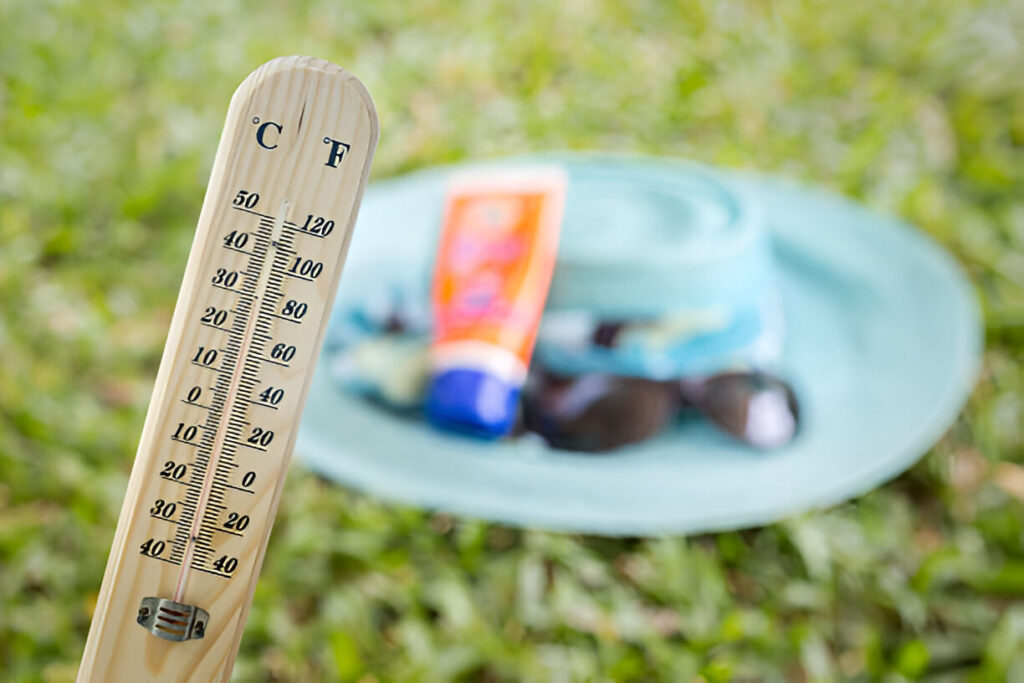Across the American South, high temperatures and stifling humidity are more than just seasonal inconveniences—they’re defining environmental challenges that impact everything from daily life to construction timelines, workforce safety, and residential design. As summers grow longer and more intense due to shifting climate patterns, professionals in development, property management, construction, and related sectors must be proactive in helping clients, teams, and communities adapt. Understanding how to manage and mitigate heat effectively is essential to long-term success in Southern markets.
Understanding the Southern Climate and Its Impact
The Southern U.S. is known for its subtropical climate, which brings prolonged summers, high humidity, and frequent heat waves. Temperatures in many areas routinely exceed 90°F from late spring through early fall, with humidity levels that significantly increase the perceived heat index. These conditions affect infrastructure durability, workforce productivity, building performance, and even the health and safety of residents.
Professionals working in this region must take these realities into account when designing, building, or maintaining properties. Heat mitigation strategies are no longer optional—they’re becoming essential features of sustainable and livable spaces. This means specifying materials that can withstand extreme temperatures, ensuring adequate ventilation in buildings, and designing outdoor areas with shade and airflow in mind. Mechanical systems, from HVAC to insulation, must also be selected and installed with peak seasonal loads in mind.
Building and Design Strategies for Hot Weather Resilience
One of the most effective ways to counteract the Southern heat is through smart architectural planning and construction techniques. Passive cooling strategies such as reflective roofing materials, well-insulated attics, cross-ventilation, and properly oriented windows can significantly reduce indoor temperatures and energy consumption. Buildings that incorporate high-performance glazing, sunshades, or overhangs not only stay cooler but also reduce reliance on mechanical cooling systems.
Landscaping also plays a key role. Shade trees, drought-tolerant ground cover, and permeable surfaces help reduce the heat island effect and lower surface temperatures around homes and commercial properties. For developers and builders, incorporating these elements into master plans can improve the marketability of properties and contribute to long-term occupant comfort.
In multifamily or commercial settings, courtyards, breezeways, and shaded outdoor gathering areas can help create microclimates that feel significantly cooler. Encouraging the use of natural materials, such as wood and stone, in exposed areas can also prevent surfaces from becoming too hot to touch, especially in family-oriented or recreational environments.
Pools and Outdoor Cooling Solutions
Outdoor amenities are a key selling point in Southern communities, and water features are among the most in-demand. Well-designed swimming pools provide much-needed relief from the heat while enhancing property value and curb appeal. In cities experiencing rapid growth and high temperatures—like Huntsville, Alabama—demand for recreational water features continues to climb.
The market for pools in Huntsville AL reflects a broader trend of integrating custom aquatic features into residential and mixed-use developments. Beyond their obvious recreational value, pools can help reduce ambient temperatures in surrounding outdoor areas and create more comfortable gathering spaces. Developers and landscape architects are increasingly including shaded pool decks, misting stations, and splash pads in both private homes and community developments to meet this demand.
These features should be designed with long-term maintenance in mind, especially considering the heavy usage and UV exposure typical of Southern summers. Investing in energy-efficient filtration systems and durable pool materials can extend the lifespan of these installations while supporting sustainability goals.
Workforce and Operational Adjustments for Heat Safety
In construction, landscaping, and other outdoor industries, managing heat exposure for workers is critical. Companies operating in the South must prioritize heat safety protocols, including hydration schedules, shaded rest areas, and adjusted work hours during peak heat times. OSHA guidelines provide a framework for protecting workers, but proactive employers often go further, incorporating wearable tech to monitor body temperature or offering training to recognize early signs of heat stress.
In addition to protecting employee health, these measures also help maintain project timelines by reducing downtime due to heat-related illness or safety incidents. For teams managing multiple job sites or properties, centralizing heat response protocols and sharing best practices across teams ensures consistent implementation and better outcomes.
Conclusion
Surviving the Southern heat requires a strategic and multifaceted approach that spans building design, property management, community planning, and workforce protection. As temperatures rise and seasons lengthen, professionals across sectors must respond with smarter solutions that prioritize comfort, safety, and sustainability. Whether it’s upgrading materials, rethinking landscape design, or investing in cooling amenities, the goal is to create environments where people can thrive year-round. By anticipating the impact of extreme heat and integrating practical, data-driven responses, businesses position themselves not only as responsible operators but also as leaders in climate-resilient development.



